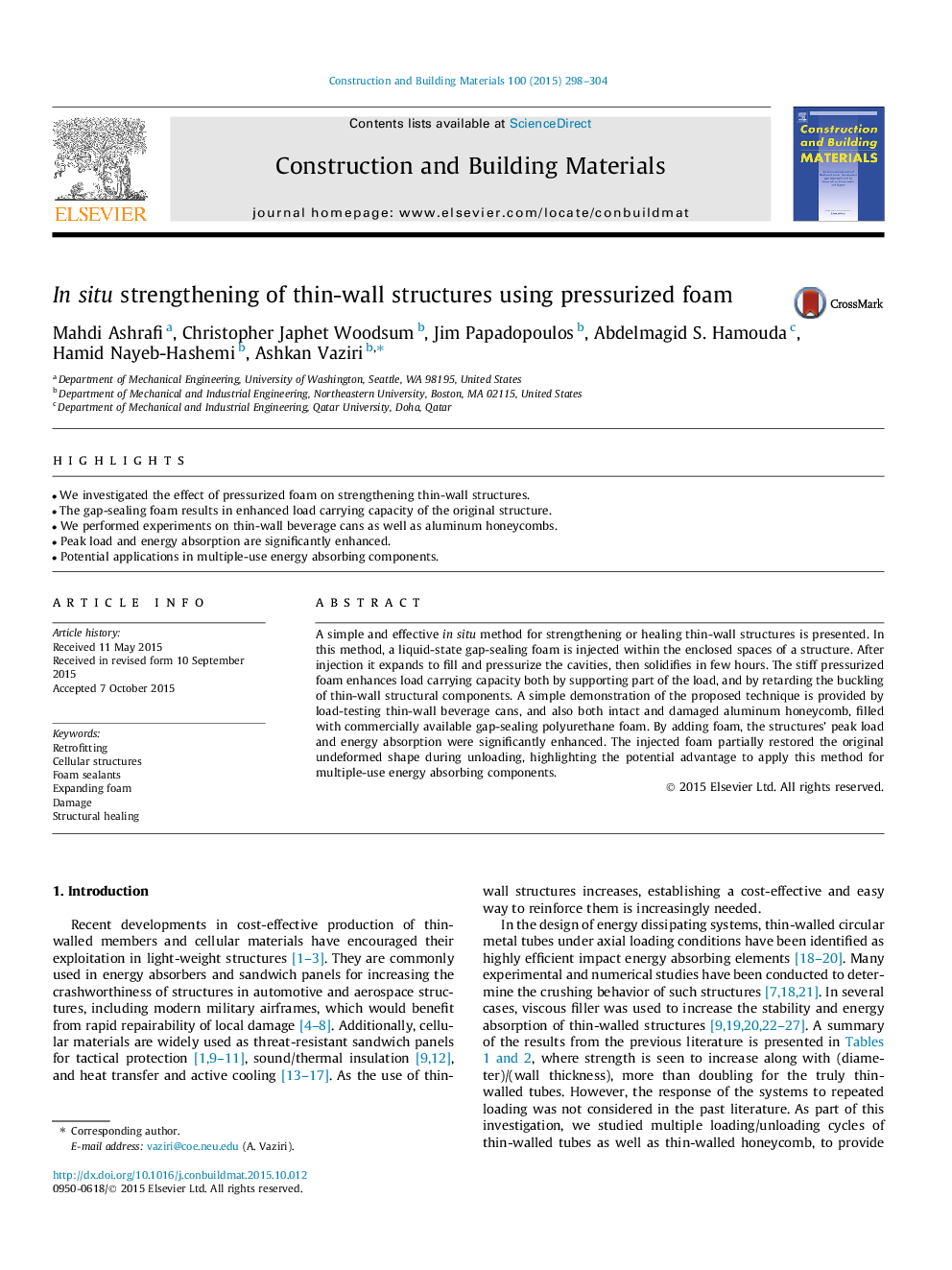| Article ID | Journal | Published Year | Pages | File Type |
|---|---|---|---|---|
| 256564 | Construction and Building Materials | 2015 | 7 Pages |
•We investigated the effect of pressurized foam on strengthening thin-wall structures.•The gap-sealing foam results in enhanced load carrying capacity of the original structure.•We performed experiments on thin-wall beverage cans as well as aluminum honeycombs.•Peak load and energy absorption are significantly enhanced.•Potential applications in multiple-use energy absorbing components.
A simple and effective in situ method for strengthening or healing thin-wall structures is presented. In this method, a liquid-state gap-sealing foam is injected within the enclosed spaces of a structure. After injection it expands to fill and pressurize the cavities, then solidifies in few hours. The stiff pressurized foam enhances load carrying capacity both by supporting part of the load, and by retarding the buckling of thin-wall structural components. A simple demonstration of the proposed technique is provided by load-testing thin-wall beverage cans, and also both intact and damaged aluminum honeycomb, filled with commercially available gap-sealing polyurethane foam. By adding foam, the structures’ peak load and energy absorption were significantly enhanced. The injected foam partially restored the original undeformed shape during unloading, highlighting the potential advantage to apply this method for multiple-use energy absorbing components.
